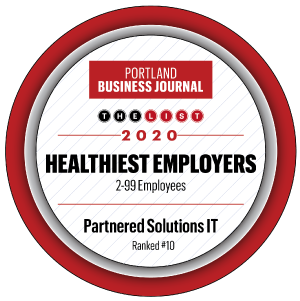
Of all the different kinds of malware, none may be as nasty or annoying as ransomware.
Ransomware is a type of malicious software that encrypts the files on your computer and forces you to pay a ransom to get them back. This malware can infect your computer through a variety of different methods including after visiting a compromised website, opening an attachment from a spam or phishing email, or existing malware on your computer downloads it directly.
Even if you can avoid paying the ransom, recovering from your computer’s infection is a major headache and can result in lots of wasted time.
Make sure you can protect yourself and your company from ransomware by understanding the basics.
Paying the Ransom Isn’t the Best Option
When you’re dealing with ransomware, you may assume that the best way to get your data back is to simply pay the ransom amount. However, this is not at all the case. If you do decide to pay, there is no way for you to determine if your data will actually be restored.
Additionally, some companies get their data re-encrypted a second time. There have been reports over the past few years of businesses across the country who paid the ransom but didn’t have their computers restored.
Mobile Devices Are at Risk Too
A common misconception about ransomware is that it only affects computers, but that isn’t necessarily true. Ransomware frequently targets computers running Windows, but it’s becoming more common for mobile devices to be at risk as well. The best way to avoid infecting your phone is to only download apps from trusted sources, such as the Apple Store or Google Play.
Ransomware Infections Can Be Avoided
The easiest way to defend yourself from a ransomware attack is to have a reputable antivirus program running on your computer. However, it is imperative that you keep your antivirus software up to date, so any potential weaknesses or exploits are fixed. Forgetting to keep your software updated opens the door to infection.
Back Up Your Computer!
If you keep up to date backups of your hard drive, dealing with a ransomware infection can be rather simple. The most recent version of your desktop prior to the infection can be restored, effectively side-stepping the ransomware.
If you’re utilizing an external hard drive for your backup, it’s wise to keep it disconnected when not in use. When a ransomware infects your computer, it tries to encrypt all accessible drives and network shares. This means you can lose access to your backup if the hard drive is connected to your computer at the time of the infection.
Dealing with ransomware is a hassle that can cost your business time and money. The best way to avoid having to deal with it is being conscious of the sources that you’re downloading from and the websites that you visit.
Whether you’re looking to take preventative measures, or you’re currently dealing with ransomware, our team of skilled IT professionals can provide assistance. Give us a call at 541-255-4980 or contact us through our website!







